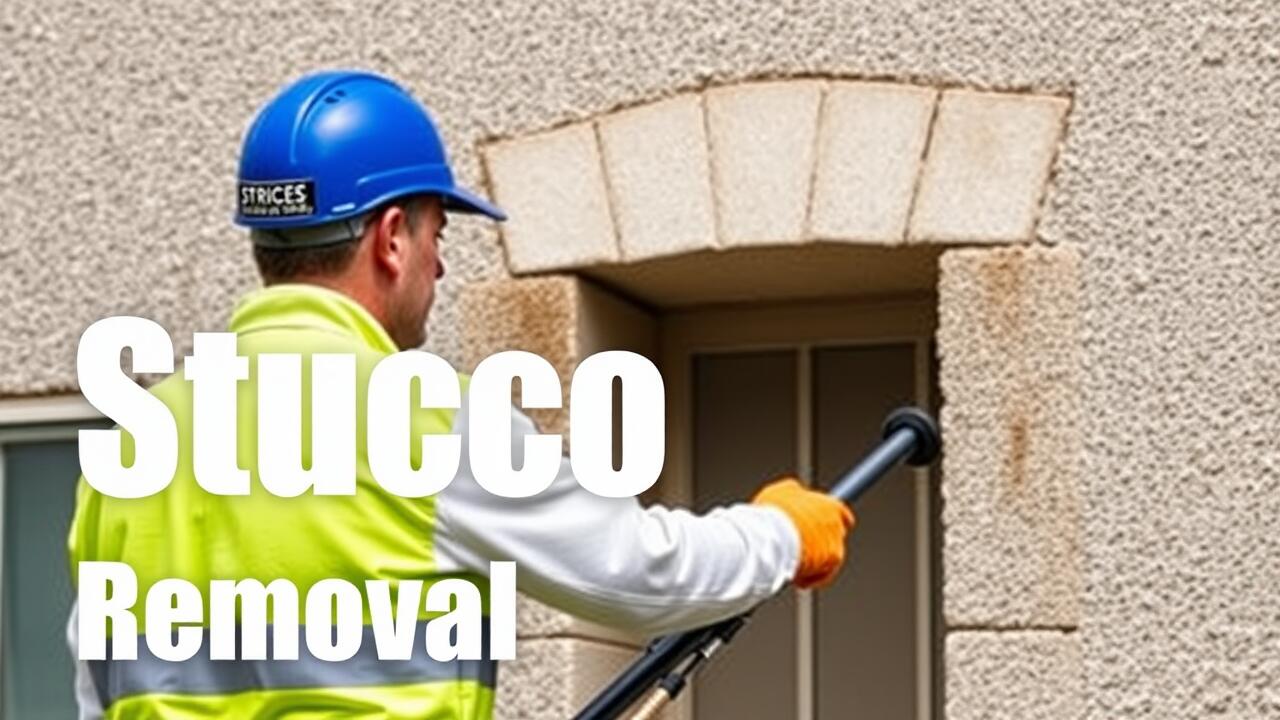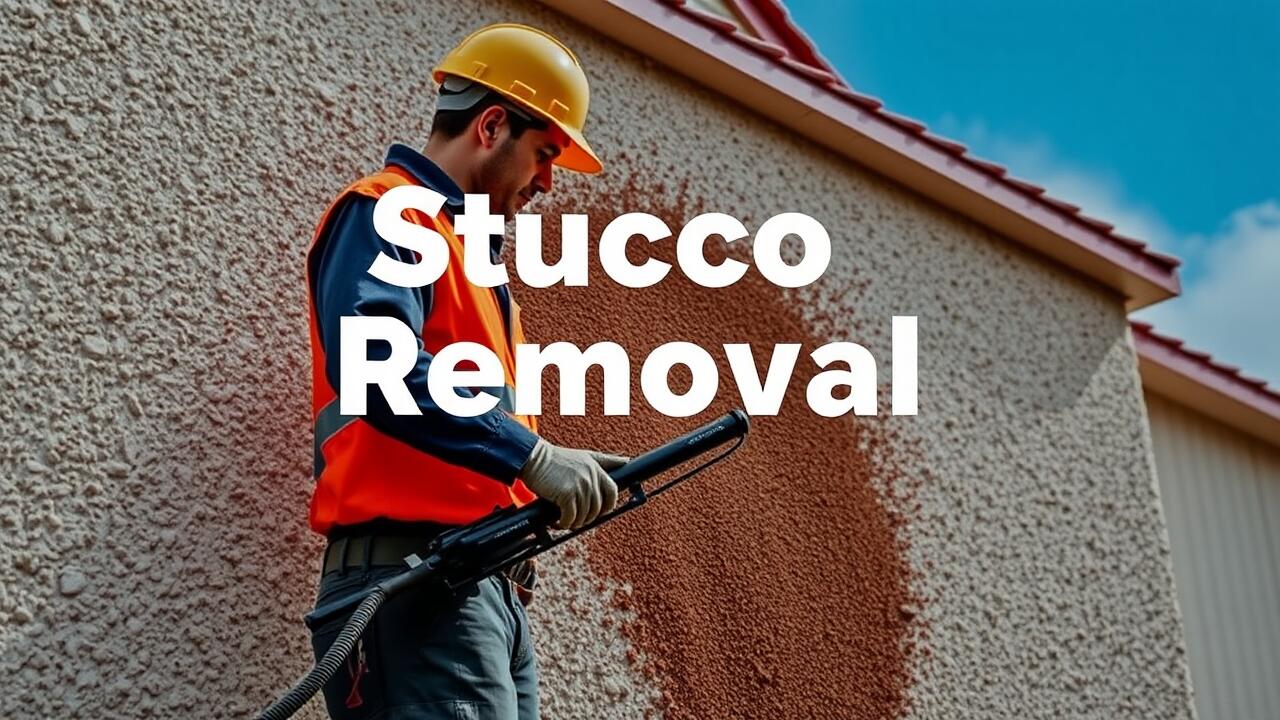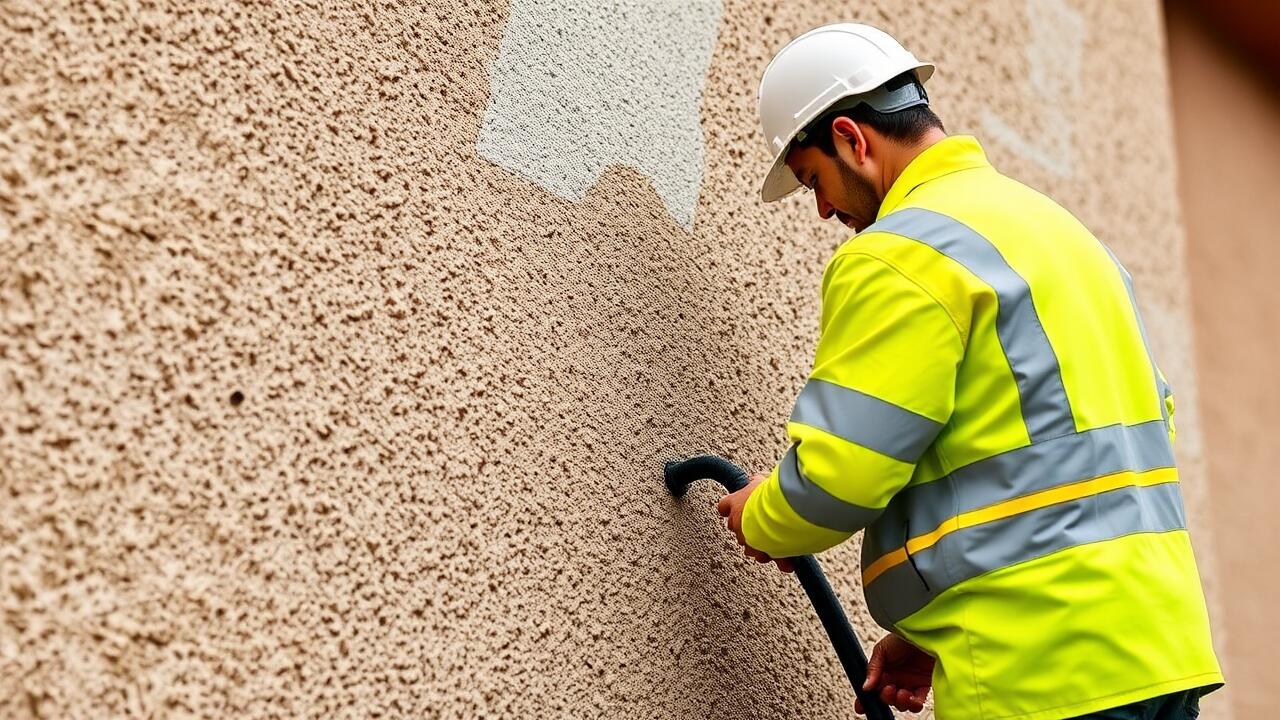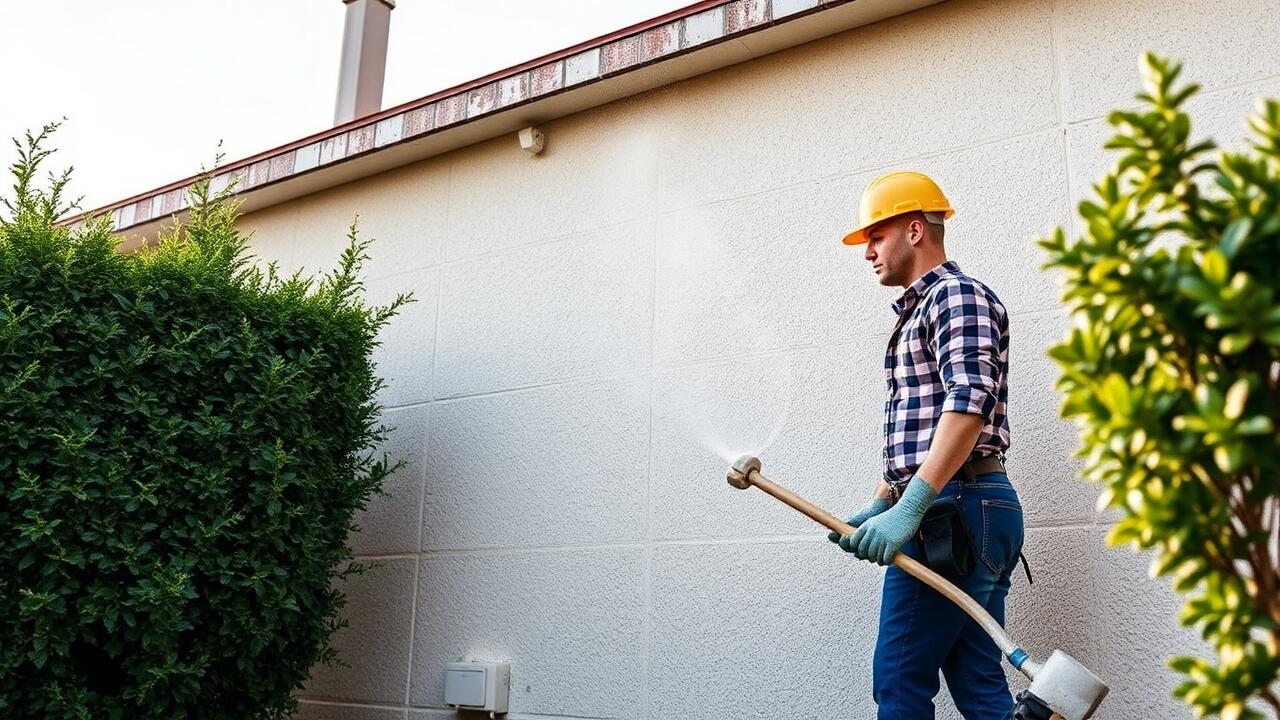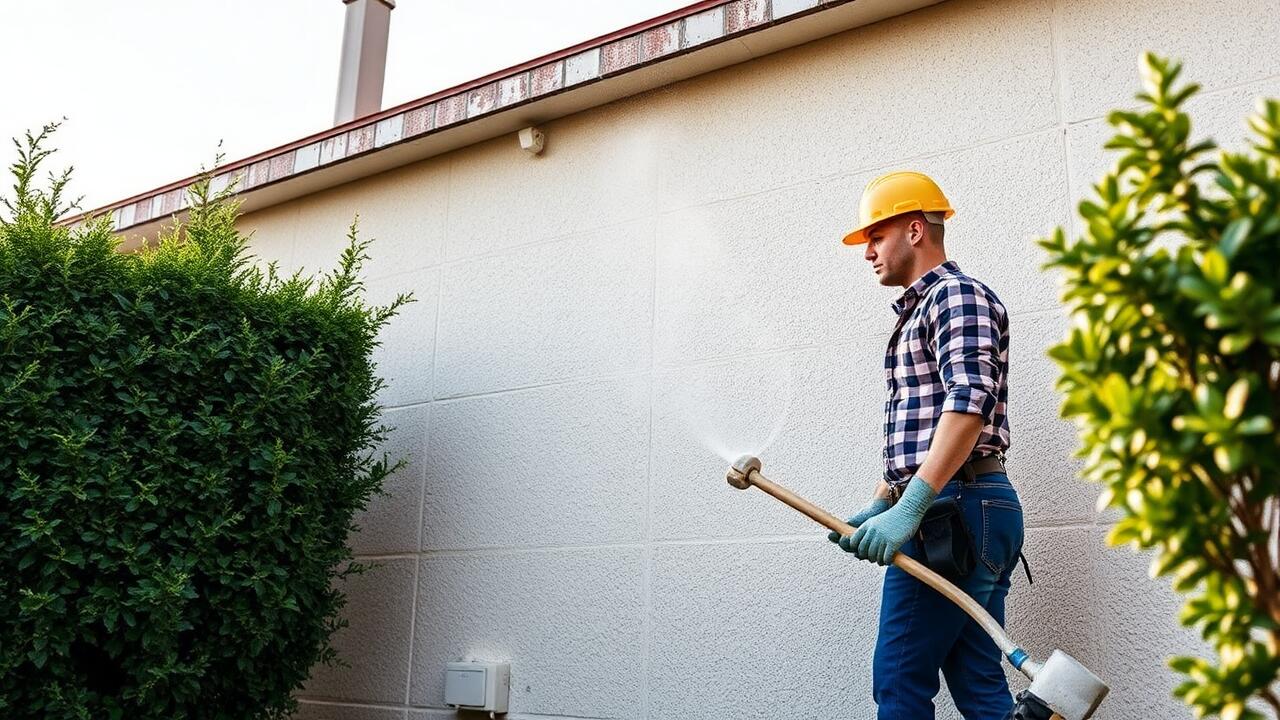
Handling Dust and Debris
When undertaking the removal of stucco, managing dust and debris is crucial to maintaining a safe working environment. The process can generate fine particles that may linger in the air, posing a risk to respiratory health. To minimize exposure, it’s essential to use protective equipment such as N95 respirators or dust masks. Wetting down the stucco surface can help control airborne dust, reducing the amount released into the air during removal. Ensuring that the surrounding area is properly covered or contained is also beneficial in preventing debris from spreading.
After completing the removal, cleaning the workspace becomes important to eliminate any remaining dust and debris. Using HEPA-filter vacuums is a practical approach to capture fine particles effectively. In regions like Pacific Palisades, Los Angeles, where stucco removal is common, local guidelines may dictate specific cleanup procedures. It’s advisable to adhere to these regulations while ensuring that the area is left clean and free from hazardous materials. Prioritizing these dust control measures will help safeguard both workers and residents nearby.
Strategies for Minimizing Respiratory Risks
When undertaking stucco removal projects, minimizing respiratory risks is crucial for ensuring the safety of all workers involved. Proper ventilation should be established in the work area to help disperse harmful dust and particles. Using high-efficiency particulate air (HEPA) filters can significantly reduce the presence of airborne contaminants, creating a cleaner environment. It's advisable to wear N95 respirators or higher-rated masks to protect against inhaling any fine dust generated during the removal process.
In Encino, Los Angeles stucco removal projects, frequent breaks are essential for workers to reduce exposure to dust and fatigue. Staying hydrated and monitoring the air quality can further enhance safety. In addition to personal protective equipment, wet methods can be employed to minimize dust creation as stucco is removed. By implementing these strategies, the potential health risks associated with stucco removal can be effectively mitigated, fostering a safer work environment.
Proper Disposal of Stucco Waste
Proper disposal of stucco waste is crucial in maintaining environmental safety and compliance with local regulations. Many areas have specific guidelines for how construction and demolition materials should be handled. Therefore, ensuring that all stucco debris is loaded into the appropriate containers and transported to designated disposal facilities is mandatory for homeowners and contractors alike. In Silver Lake Heights, Los Angeles stucco removal must adhere to these protocols to minimize negative impacts on the community and the environment.
In addition to following local regulations, considering eco-friendly disposal options can further benefit the environment. Reusing or recycling stucco materials, when possible, can significantly reduce waste. Many recycling centers in the Los Angeles area accept construction debris, providing an alternative to landfills. Engaging with services that specialize in sustainable practices not only promotes responsible waste management but also supports the broader initiative of reducing landfill contributions from home renovation projects.
Environmentally Responsible Disposal Methods
Disposing of stucco waste requires attention to environmental regulations to prevent pollution. Choosing to separate recyclable materials such as wood and metal enhances the responsible disposal process. In regions like West Adams, Los Angeles, stucco removal projects can benefit from local recycling facilities that accept construction debris. Utilizing these facilities reduces landfill waste and supports sustainable practices within the community.
In addition to recycling, homeowners and contractors should consider repurposing stucco materials when possible. Many creative projects can incorporate old stucco, such as garden pathways or outdoor decor. This approach not only minimizes waste but also adds a unique touch to landscaping. Engaging with local environmental groups can provide more information about sustainable disposal methods specific to the West Adams, Los Angeles area.
Recognizing Signs of Asbestos
Identifying the presence of asbestos in stucco materials is crucial for ensuring safety during removal. Asbestos fibers can often be found in homes built prior to the 1980s. In many cases, these fibers are mixed into the stucco for strength and insulation purposes. Homeowners should be vigilant for signs of age-related wear and tear on stucco surfaces. Crumbling, cracking, or damage may signal the need for further inspection.
When considering a project such as West Adams, Los Angeles stucco removal, understanding the visual cues of asbestos can help in making informed decisions. Certain older stucco products can present a textured finish or specific color patterns that may suggest asbestos content. If there is uncertainty, consulting a professional for testing is a prudent step to ensure that safety protocols are adhered to throughout the process.
Safety Measures for Older Homes
Older homes often pose unique risks during renovations, particularly concerning the potential presence of hazardous materials like asbestos. It's crucial for homeowners to conduct thorough inspections before commencing any stucco removal projects. Engaging a certified inspector can help identify any signs of asbestos, ensuring safety is prioritized. Property owners should never assume older stucco is safe; even if it appears intact, testing it can prevent dangerous exposure.
During stucco removal in North Hollywood, Los Angeles, it is vital to implement strict safety protocols. This includes providing workers with appropriate personal protective equipment such as respirators and protective clothing. Establishing a containment area can help control dust and debris, further reducing health risks. Local regulations regarding asbestos removal should always be followed meticulously to ensure compliance and safety during the process.
FAQS
What safety precautions should I take when removing stucco?
When removing stucco, it's important to wear appropriate personal protective equipment (PPE) such as a respirator, safety goggles, and gloves. Additionally, ensure proper ventilation in the working area and consider using a dust control system to minimize airborne particles.
How can I minimize respiratory risks during stucco removal?
Strategies for minimizing respiratory risks include using a wet removal method to keep dust down, working with tools that have dust collection systems, and taking regular breaks in a clean air environment to limit exposure to harmful particles.
How should I dispose of stucco waste?
Proper disposal of stucco waste involves checking with local regulations to determine if it can be taken to a landfill or if it requires special handling. Always ensure that any hazardous materials are disposed of in accordance with environmental guidelines.
What are environmentally responsible methods for disposing of stucco?
Environmentally responsible disposal methods include recycling stucco materials when possible, utilizing local hazardous waste facilities for contaminated materials, and seeking out companies that specialize in eco-friendly disposal.
How can I tell if my stucco contains asbestos?
If your home was built before the 1980s, there is a possibility that the stucco may contain asbestos. It’s important to have a professional inspection and testing conducted before removal. Visible signs of wear or damage can also be indicators, but testing is the only way to confirm its presence.
